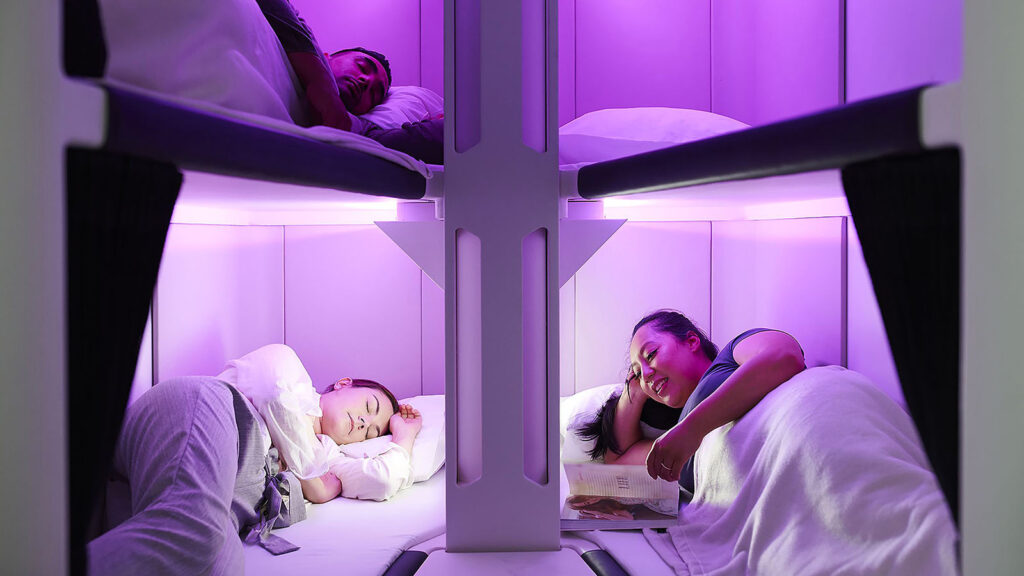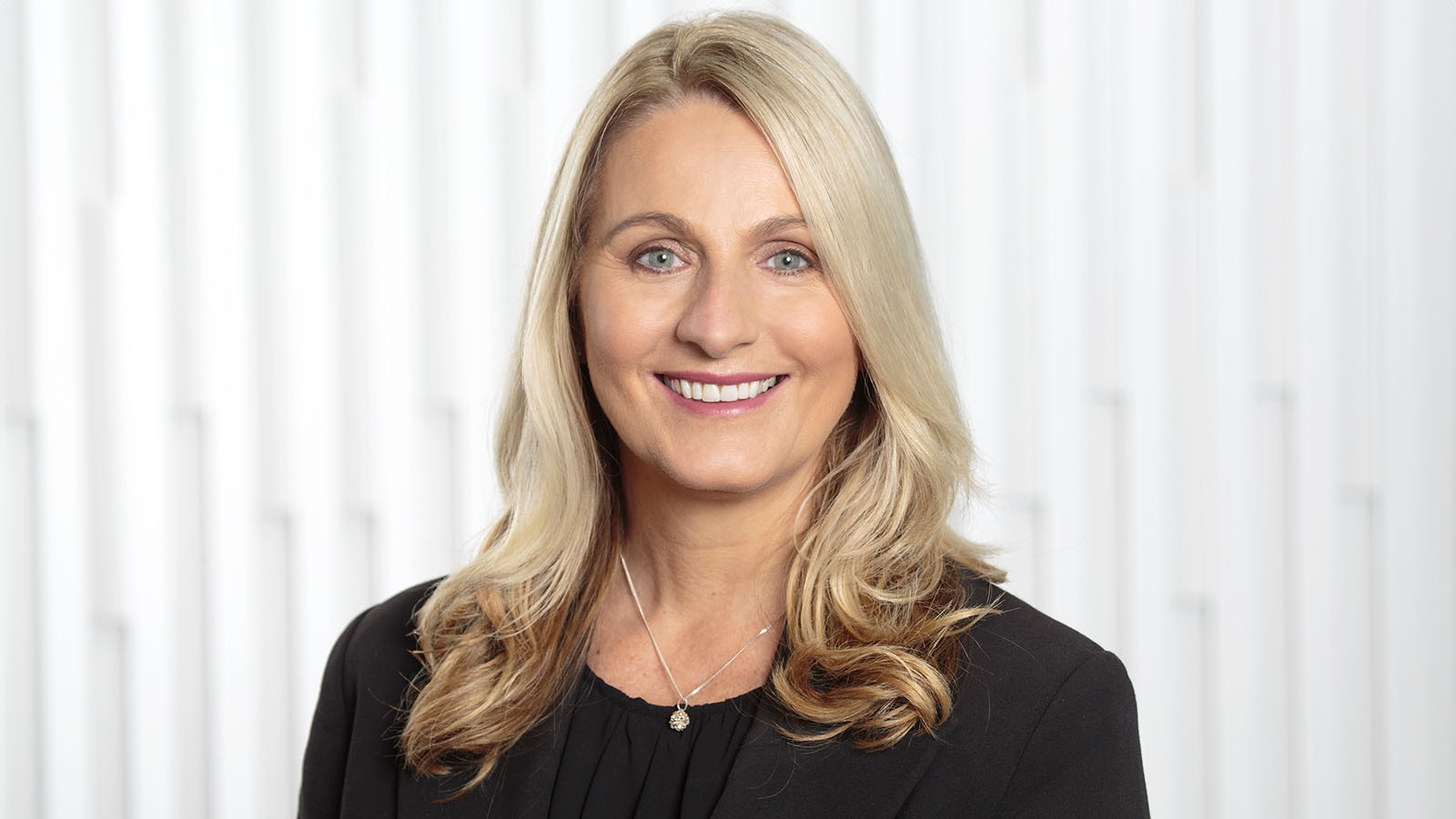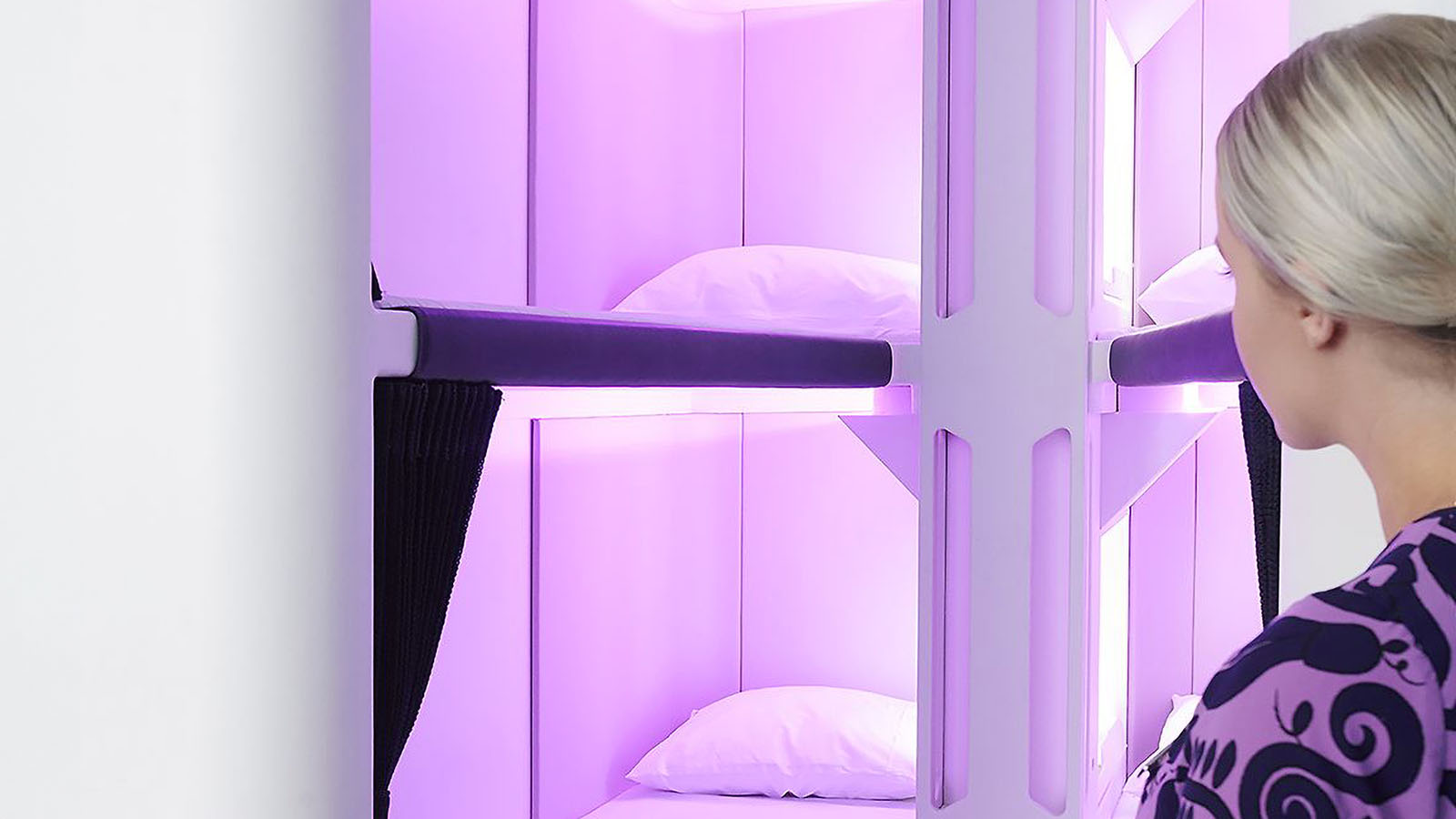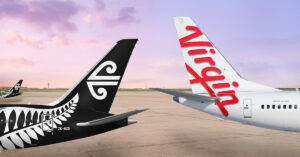Will Air New Zealand’s Skynest make Business Class obsolete?
If you allow passengers booked in Economy to lie flat, why would people book Business?

What we'll be covering
EXCLUSIVE INTERVIEW | Years ago, Air New Zealand made headlines with its revolutionary Economy Skycouch product. This design allows travellers to transform three adjacent Economy Class seats into a flatbed—essentially, by raising a very large leg rest to sit flush with the usual base seat cushion. But now, Air New Zealand is going one better: Skynest.
Rather than simply going flat in Economy, Skynest resides in a separate area of the plane. Passengers booked in Economy Class and Premium Economy will be able to make an additional reservation to spend time en route in the Skynest zone. Think of it like a bunk bed – but one where passengers take turns in timed blocks.
Clearly, being able to lay flat on an Economy ticket will be a prized perk. But that’s a big part of the reason that many people book Business Class, to maximise their rest. If people can just buy Economy and pay a little extra to get some sleep along the way, is Air New Zealand risking that passengers will ‘self downgrade’ from buying seats at the front?
To find out, I catch up with Leanne Geraghty. She’s Air New Zealand’s Chief Customer and Sales Officer, who’s visiting Australia for the CAPA Airline Leader Summit, where we sit down to a chat.

Does Skynest get too close to Business Class?
There’s no suggestion that Economy Class passengers will be able to spend their entire flight in Skynest. But at minimum, they’ll be able to book a session of at least four hours in the bunk. Geraghty is upfront that the whole product is built around getting sleep in a way that mightn’t be as easy back in your Economy seat.
‘The four-hour timeframe is based on data and sleep studies that we had conducted,’ she explains. ‘It enables people to go through a couple of rhythms of sleep. It gives them time to actually fall asleep, go through those rhythms, and then wake up and feel refreshed and rested.’
But will it impact Business Class ticket sales? ‘We’ve only got six of the sleeping beds in the Skynest,’ Geraghty rationalises, so the number of passengers who could use it is still quite limited per flight. The initial four-hour cap seems to have been set to ensure people don’t get too comfortable or have too much of a rest, which makes a trade-off with the usual Business Class experience.


Could pricing help the situation?
Might Air New Zealand charge more though, to let people stay for eight hours and get a full night’s sleep? ‘I’ve been asked this,’ Geraghty says. ‘We’re still working through it. It’s a really new product. So the initial thinking was it would be restricted to one session per customer per flight, but never say never. It’s like anything, you put something into market, you see what the reaction is like what the demand is and the feedback and then we will adjust if we have to.’
Nonetheless, ‘we are very excited, and we can’t wait to have them on board. But that’s going to be with the new aircraft at the end of next year.’ It seems, for Air New Zealand, it’s a game of patience. Patience, with a dash of ambition.
Also read: Virgin Australia gets green light for Air New Zealand partnership
Imagery courtesy of Air New Zealand. Chris Chamberlin attended the CAPA Airline Leader Summit in Brisbane as a guest of CAPA Centre for Aviation.
HSBC Star Alliance Credit Card
Stay up to date with the latest news, reviews and guides by subscribing to Point Hacks’ email newsletter.






Might work for some but I doubt Sky nest makes a dent in business class. It is part of Air NZ’s brand of trying to be being different/ quirky, just like the inane safety videos.